

Lipedema is a chronic condition predominantly affecting women, characterized by abnormal fat accumulation in the legs and arms. It can be a confusing and often misdiagnosed condition, leading many to feel lost in their search for information and support. However, the internet has become a haven for resources, offering extensive information and a sense of community for those affected by lipedema. This blog will explore the wealth of resources available to women with lipedema, including the website lipedema.net, Dr. Wright’s YouTube channel, Facebook group, Instagram, and Pinterest pages, each offering unique insights and support for this condition.
Lipedema.net is an excellent starting point for anyone seeking comprehensive information about lipedema. This website is an extensive resource, providing detailed insights into the nature of the disease, symptoms, diagnosis, and treatment options. It offers:
For those who prefer video content, Dr. Wright’s YouTube channel, Lipedema Info, is a treasure trove of information. The channel features:
The Lipedema Group – Lipedema.net on Facebook is a vibrant community where members can find support and share experiences. This group offers:
Dr. Wright’s Instagram page, @lipedemasurgicalsolutions, is a visually engaging platform providing insights into the treatment and management of lipedema. Here, you can find:
Lastly, Dr. Wright’s Pinterest page, Laser Lipo Vein, is an excellent resource for educational material and inspiration. This platform offers:
Living with lipedema can be challenging, but with the right resources and support, managing the condition becomes significantly easier. From comprehensive information hubs like lipedema.net to engaging social media platforms like YouTube and Instagram, numerous avenues exist to explore for education, support, and community. Dr. Wright’s dedication to providing a wealth of resources across these platforms highlights the growing awareness and support for those battling lipedema. By leveraging these resources, women with lipedema can empower themselves with knowledge, find comfort in shared experiences, and remain updated on the latest in lipedema care and research.
Remember, while online resources are invaluable, they should complement, not replace, professional medical advice. Always consult with healthcare professionals for personalized medical guidance and treatment plans.
If you or someone you know is dealing with lipedema, we encourage you to explore these resources. Visit lipedema.net, subscribe to Dr. Wright’s YouTube channel, join the Facebook group, follow the Instagram page, and check out the Pinterest boards. Each platform offers unique perspectives and support, providing a comprehensive toolkit to understand and manage lipedema effectively. Join this growing community today and take a step forward in your journey toward wellness and empowerment.


In today’s society, body image and weight management are often hot topics of discussion. Many individuals strive to achieve their desired physique through diet and exercise. However, for some, the struggle to lose weight in certain areas, particularly the legs, can be frustrating and confusing. This leads us to a common question: Is it lipedema or obesity? In this comprehensive guide, we will explore the key differences between lipedema and weight gain, helping you understand your body better and make informed decisions about your health and well-being.
Lipedema is a chronic and progressive medical condition characterized by the abnormal accumulation of fat cells, primarily in the lower body. It predominantly affects women, with an estimated prevalence of 7-11% in Western countries. Lipedema causes a disproportionate increase in fat deposits in the legs, hips, and buttocks while sparing the hands and feet. Individuals with lipedema often have a smaller waist and upper body, creating a distinct pear-shaped appearance.
One of the primary distinctions between lipedema and weight gain is that lipedema fat is resistant to traditional weight loss methods such as diet and exercise. Despite leading a healthy lifestyle, individuals with lipedema find it challenging to reduce fat in the affected areas. Lipedema fat can also exhibit unique characteristics, such as a gelatinous texture and the presence of small nodules beneath the skin.
Lipedema is thought to have a genetic component, with hormonal changes during puberty, pregnancy, and menopause potentially triggering its onset or exacerbation. It is crucial to understand that lipedema is not caused by obesity. While many individuals with lipedema may also be overweight or obese, the condition itself is independent of weight status.
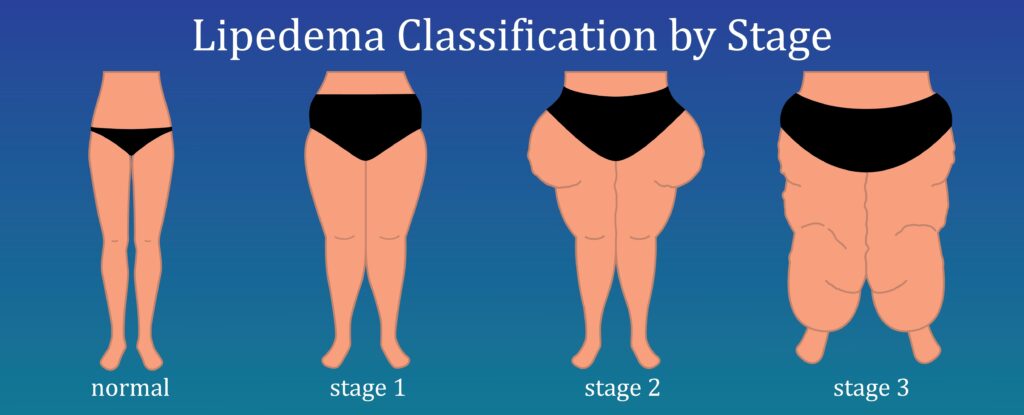

It is important to distinguish between lipedema and weight gain to ensure accurate diagnosis and appropriate treatment. While both conditions involve the accumulation of excess fat, they have distinct characteristics and underlying causes.
Lipedema presents with specific symptoms that differentiate it from general weight gain. Individuals with lipedema often experience:
In contrast, weight gain typically occurs more evenly throughout the body and is not associated with pain or other physical symptoms commonly seen in lipedema.
One of the key distinctions between lipedema and weight gain is the response to lifestyle changes. Individuals with lipedema often find that diet and exercise alone do not significantly impact the fat accumulation in the affected areas. Despite their best efforts, weight loss may be minimal or not occur at all in these specific regions. On the other hand, individuals experiencing general weight gain will typically see changes in their body composition through proper nutrition and physical activity.
Lipedema fat distribution differs from general weight gain. Lipedema fat primarily affects the lower body, including the legs, hips, and buttocks, while sparing the hands and feet. This leads to a distinct shape and disproportion between the upper and lower body. In contrast, weight gain is typically more evenly distributed throughout the body, without the characteristic pear-shaped appearance.
Lipedema not only affects physical health but can also have a significant psychological and emotional impact. Many individuals with lipedema experience depression, low self-esteem, and social isolation due to the perceived body image differences and the challenges associated with finding appropriately fitting clothing. Weight gain, on the other hand, may have similar psychological effects but is not specifically linked to the unique challenges faced by individuals with lipedema.
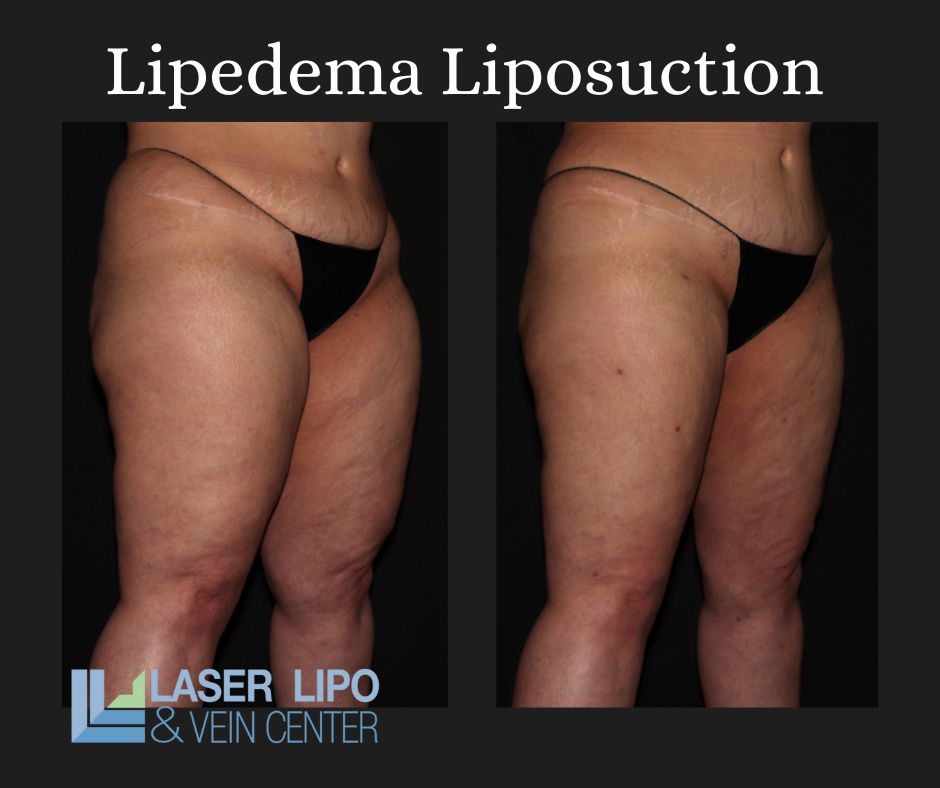

Accurate diagnosis is essential to establish appropriate treatment strategies for individuals with lipedema. If you suspect that you may have lipedema, it is crucial to consult with a healthcare professional experienced in the diagnosis and management of this condition. They will evaluate your symptoms, medical history, and perform a physical examination to assess fat distribution and other associated features.
Currently, there is no cure for lipedema, but various treatment options can help manage symptoms and improve quality of life. Treatment for lipedema may include:
It is important to note that liposuction is not a cure for lipedema but can offer significant improvements in symptoms and overall quality of life for select patients.
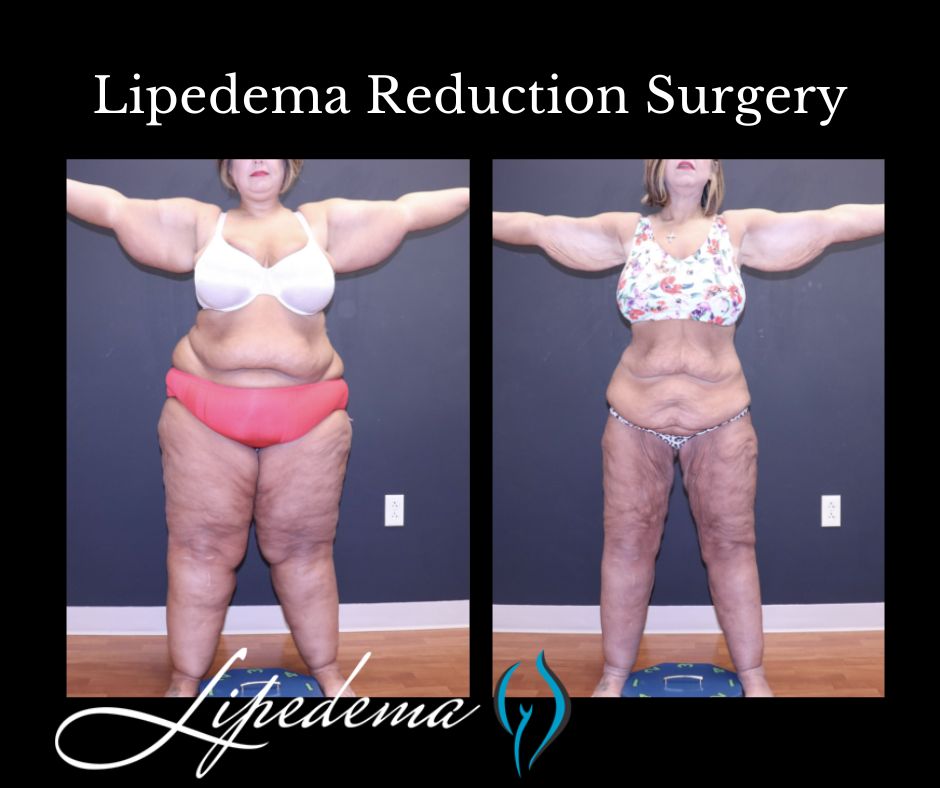

Understanding the difference between lipedema and weight gain is crucial for accurate diagnosis and appropriate treatment. Lipedema is a chronic condition characterized by the abnormal accumulation of fat in the lower body, while weight gain is a general increase in body weight. Lipedema fat is resistant to traditional weight loss methods, and individuals with lipedema often experience specific symptoms, such as pain, tenderness, and easy bruising.
If you suspect you may have lipedema, consulting with a healthcare professional or an experienced lipedema specialist is essential to develop an individualized treatment plan that addresses specific needs and goals. Dr. Wright and his team of experts are here for you whenever you’re ready to start your treatment journey!
Remember, your health and well-being are important, regardless of your body shape or size. By seeking appropriate care and support, you can live a fulfilling life and embrace your unique beauty.


Have you ever heard of lipedema? It’s a condition that affects millions of women worldwide. It causes an abnormal buildup of fat cells in the legs, buttocks, and hips, which can lead to pain, discomfort, and even disability. While there are several treatment options available, liposuction has become a popular choice among patients. However, not all liposuction procedures are the same. In fact, there are two distinct types of liposuction that are often confused: lipedema liposuction and cosmetic liposuction.
Understanding the key differences between these two procedures is essential for anyone considering liposuction for lipedema or cosmetic purposes. In this article, we’ll take a closer look at lipedema liposuction and cosmetic liposuction and explain what sets them apart. So, whether you’re a patient or a healthcare provider, keep reading to discover the crucial distinctions between these two types of lipo.
Lipedema is a chronic condition that affects mainly women, although it can occur in men as well. It’s characterized by an abnormal accumulation of fat and fibrous tissue in the legs, hips, and buttocks, which can cause pain, swelling, and tenderness. Lipedema is often misdiagnosed as obesity, lymphedema, or cellulite and can be a source of emotional and physical distress for those affected. As it progresses, Lipedmea can cause impairment in lymphatic function in the affected areas. There’s no cure for lipedema, but several treatment options are available, including liposuction.
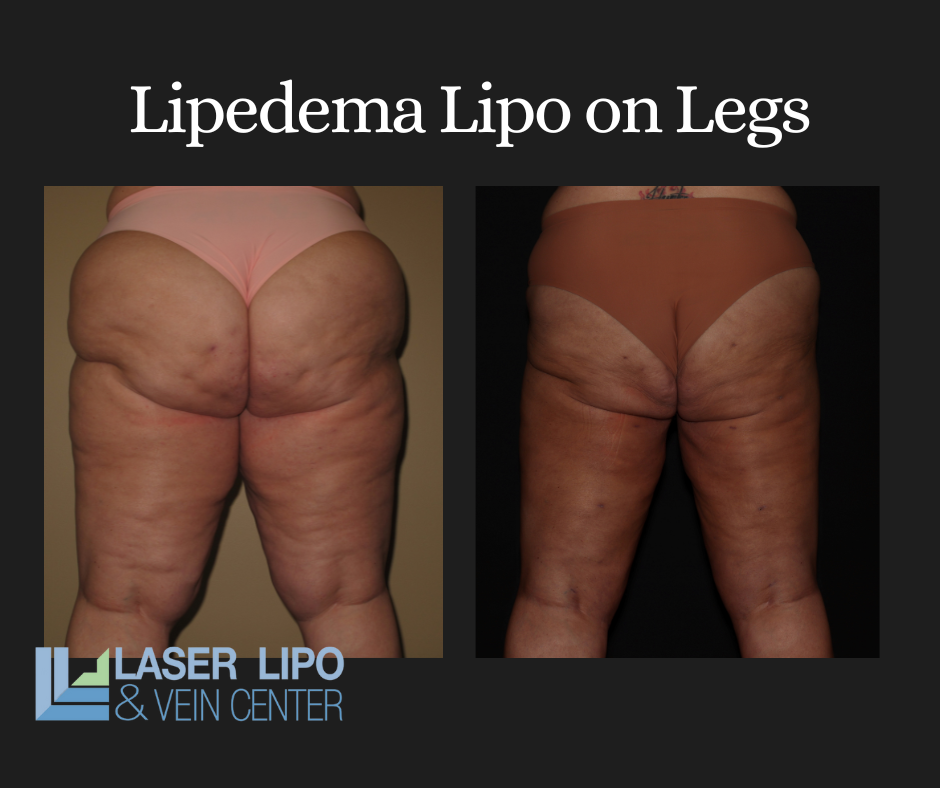

Lipedema liposuction is a specialized type designed to address the unique needs of lipedema patients. Unlike traditional cosmetic liposuction, which focuses on removing excess fat for aesthetic purposes, lipedema liposuction aims to reduce pain, improve mobility, and prevent further progression of the condition. Lipedema liposuction requires generous tumescent anesthesia and involves making small incisions in the affected areas. The surgeon then uses a specialized cannula to remove the excess fat cells while preserving the healthy tissue. The procedure can take several hours, depending on the extent of the lipedema.
One of the key differences between lipedema liposuction and cosmetic liposuction is that lipedema liposuction is the extra surgical technique used to protect the lymphatics, sometimes called “lymph sparing.” It also may require multiple sessions to achieve optimal results. Lipedema is a chronic condition that can’t be cured with a single procedure. Lipedema patients may also require ongoing maintenance sessions to prevent further progression. Often Lipedema Lymph Sparing liposuction is combined with Manual Extraction of the fibrous nodules caused by the lipedema disease.
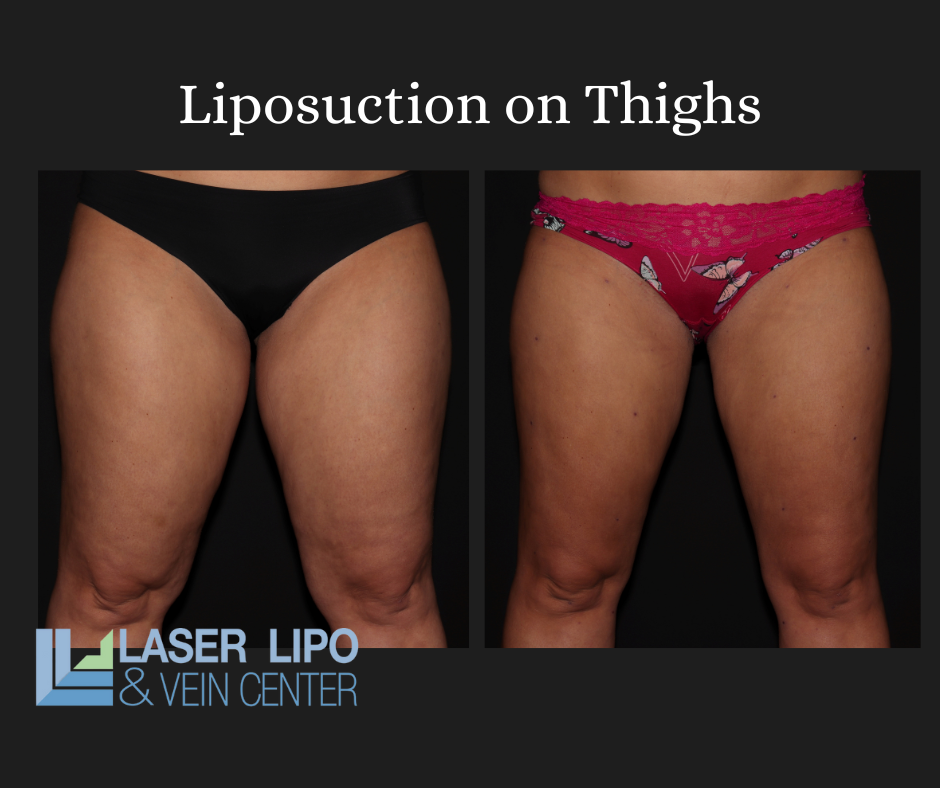

Cosmetic liposuction, also known as traditional liposuction, is a popular cosmetic procedure that’s designed to remove excess fat cells from various areas of the body, including the abdomen, thighs, and arms. Unlike lipedema liposuction, which is performed for medical reasons, cosmetic liposuction is performed for aesthetic purposes only.
While lipedema liposuction and cosmetic liposuction are both forms of liposuction, there are several key differences between the two procedures. Some of the most significant differences include the following:
Like any surgical procedure, lipedema liposuction and cosmetic liposuction carry some risks and side effects. Some of the most common risks and side effects include:
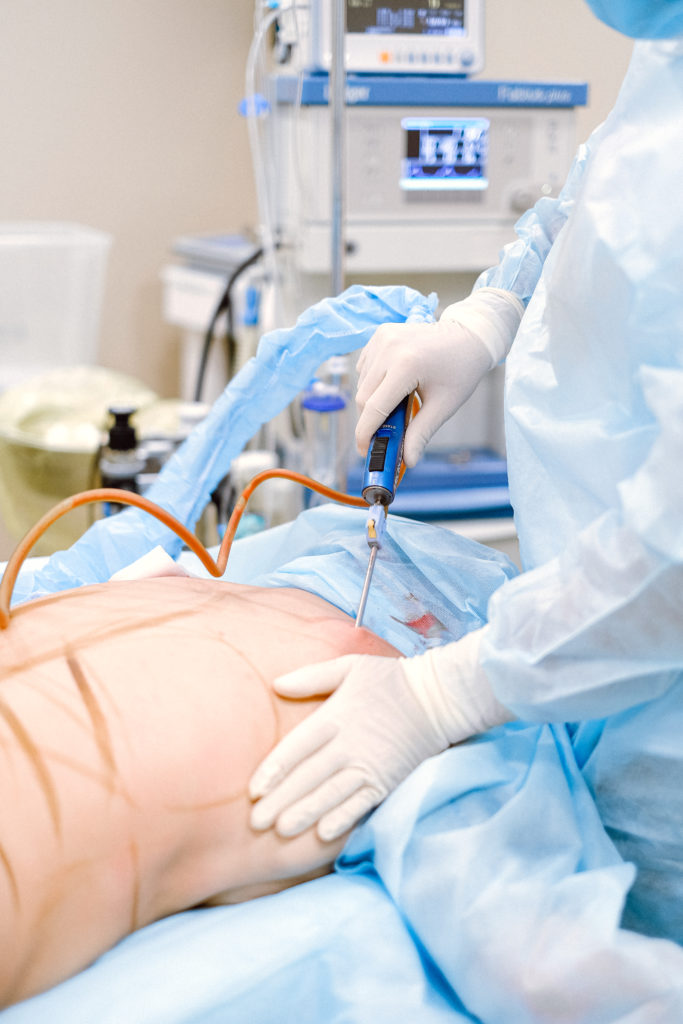

Recovery time and results can vary depending on the extent of the procedure and the patient’s individual health status. In general, patients can expect to experience some discomfort and swelling for several weeks after the procedure.
Patients undergoing lipedema liposuction may require compression garments and lymphatic massage to reduce swelling and promote healing. They may also need to avoid strenuous exercise and other activities for several weeks after the procedure.
Patients undergoing cosmetic liposuction can typically resume normal activities within a few days of the procedure. They may need to wear compression garments for several weeks to reduce swelling and promote healing.
Results from both procedures can be long-lasting, although patients need to maintain a healthy lifestyle to prevent further weight gain and the progression of lipedema.
Lipedema liposuction is typically recommended for patients with advanced lipedema who have not responded to other treatments, such as compression therapy and diet modifications. Candidates for lipedema liposuction should be in good overall health and have realistic expectations of the procedure.
Cosmetic liposuction is typically recommended for patients who are at or near their ideal weight but have stubborn areas of fat that are resistant to diet and exercise. Candidates for cosmetic liposuction should be in good overall health and have realistic expectations of the procedure.
Choosing the right surgeon for lipedema liposuction or cosmetic liposuction is crucial for achieving the best possible results. Patients should look for a surgeon who has experience in performing the procedure, a proven track record of patient outcomes, and a good reputation in the community. Lipedema is a disease that requires specialized knowledge and comprehensive treatment, including dietary counseling and medical-grade compression to optimize lymphatic function. Pre and post-surgery treatment are focused on lowering tissue inflammation and controlling the disease comprehensively for the best results.
Many plastic surgeons approach lipedema reduction surgery as an isolated surgical procedure and need to treat lipedema comprehensively, which can result in suboptimal results or recurrence of symptoms. It is highly recommended to choose a surgeon who treats lipedema disease comprehensively. Patients should seek a surgeon who diagnoses the disease and starts conservative treatment first. A surgeon who treats comprehensively will ensure conservative treatment has been optimized, as proceeding with surgery when inflammation is elevated can actually worsen the disease course. Once the proper overall treatment plan has been implemented, the surgeon should take the time to explain the procedure and answer any questions the patient may have.
The cost of lipedema liposuction and cosmetic liposuction can vary depending on several factors, including the extent of the procedure, the surgeon’s experience, and the geographic location.
Lipedema liposuction can be more expensive than cosmetic liposuction due to the specialized technique and multiple sessions required. Patients should check with their insurance provider to see if the procedure is covered under their policy.
Lipedema liposuction and cosmetic liposuction are two distinct types of liposuction that are often confused. While both procedures involve the removal of excess fat cells, they have different purposes, approaches, and techniques. Understanding the key differences between lipedema liposuction and cosmetic liposuction is crucial for anyone considering liposuction for medical or cosmetic reasons. Patients should consult with a board-certified surgeon to determine which procedure is right for them and to achieve the best possible results.
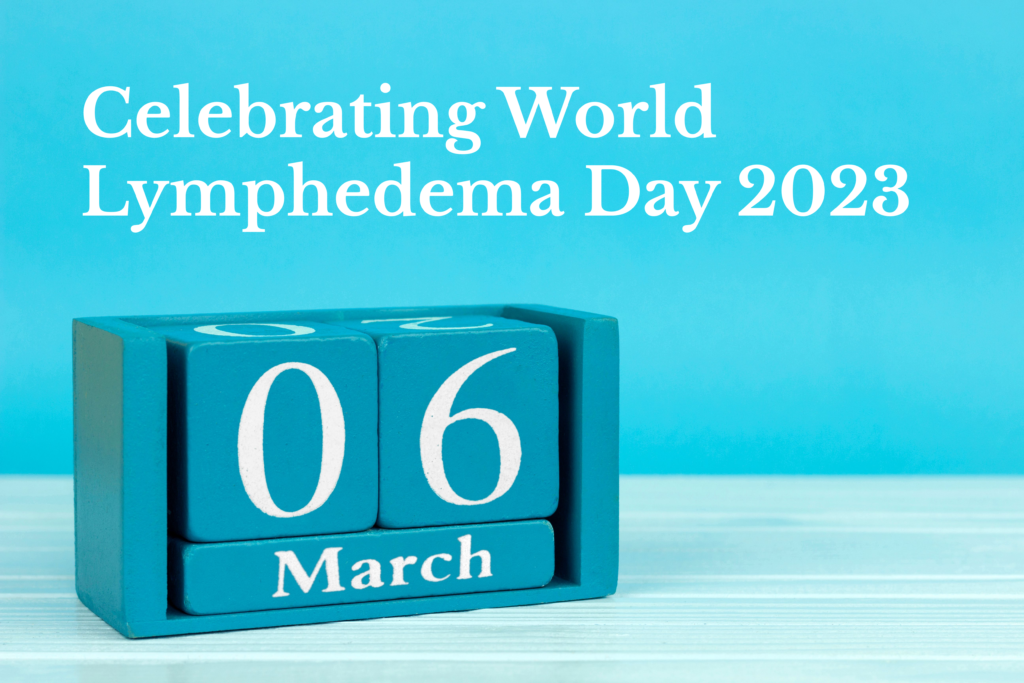

On March 6th, we honor and celebrate the awareness, understanding, and support of those with lymphedema. Lymphedema is a chronic condition that is often overlooked, and World Lymphedema Day was created to bring awareness to this condition and support those living with it.
March is Lymphedema Awareness month, a time to put on your light blue ribbon and find creative ways to participate in educating the world on lymphatic diseases. The highlight of the month, World Lymphedema Day, falls on March 6th this year. The Lymphatic Network hosts a wide range of events worldwide for the community to participate in digitally and in person. Sign up for events and presentations on their home page, or use their guide to getting involved and participating on World Lymphedema Day. The clinical, patient, and advocacy communities and the private sector join forces all month long to increase awareness of this chronic condition.
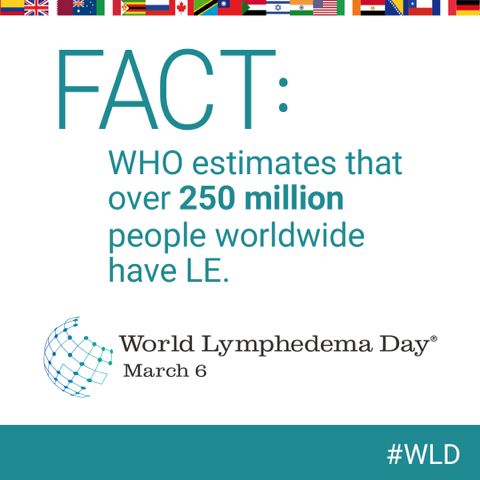

The United States Senate established World Lymphedema Day in 2016 in response to a Senate bill written by the Lymphatic Education & Research network. Advocates celebrate each March annually, with the primary focus on educating the world on all lymphatic diseases: primary and secondary lymphedema (LE), lipedema (LI), lymphatic filariasis (LF), lymphatic malformations (LM), and the full lymphatic continuum (LC) of diseases impacted by the lymphatic system.
Lymphedema is when excess fluid accumulates in the body’s tissues, causing swelling. It can develop when the lymphatic system, which helps move fluid to the bloodstream, is damaged or blocked. There are two types of lymphedema: primary lymphedema, which is caused by a genetic disorder, and secondary lymphedema, which is caused by an injury or medical condition. Lymphedema can affect any body part but is most commonly found in the arms and legs.
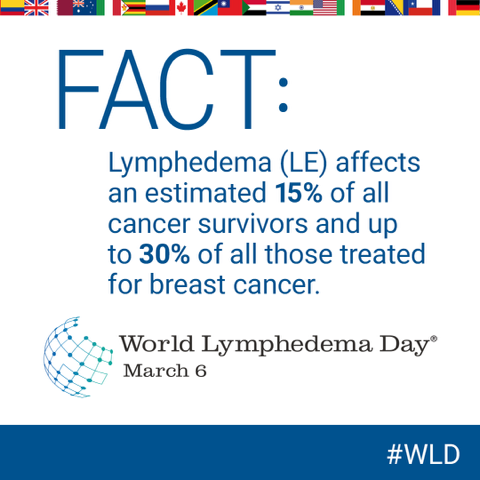

Lymphedema is a condition that occurs when lymphatic fluid, a transparent liquid composed of fat, water, salts, and proteins, begins to pool and accumulate in the arms and the legs. The initial and most predominant symptom indicating the presence of Lymphedema is significant swelling of these extremities. Medical experts point to damaged lymph vessels as the cause behind fluid retention leading to Lymphedema.. Other potential causes for fluid retention are linked to infections, genetics or underlying medical conditions, especially cancer and its treatment. Keep reading to learn more about the treatment of Lymphedema in St Louis.
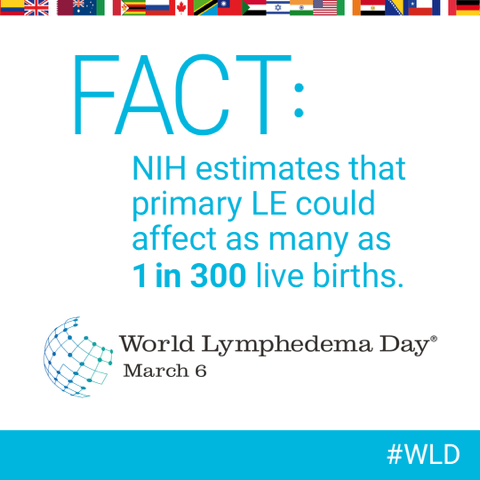

The most common cause of lymphedema is damage to the lymph nodes or lymph vessels due to cancer treatments such as radiation and chemotherapy. Other causes of lymphedema include surgery, trauma, infection, and other medical conditions such as congestive heart failure or cirrhosis of the liver.
In some cases, the cause of lymphedema is unknown. This is called idiopathic lymphedema. It is most often seen in women over the age of 50.
The most common symptom of lymphedema is swelling in the affected area. This swelling can be mild or severe and can range from a feeling of heaviness to visible swelling. Other symptoms of lymphedema include pain, tightness, aching, and stiffness in the affected area. In some cases, lymphedema can also cause changes in the skin, such as thickening, discoloration, and itching.
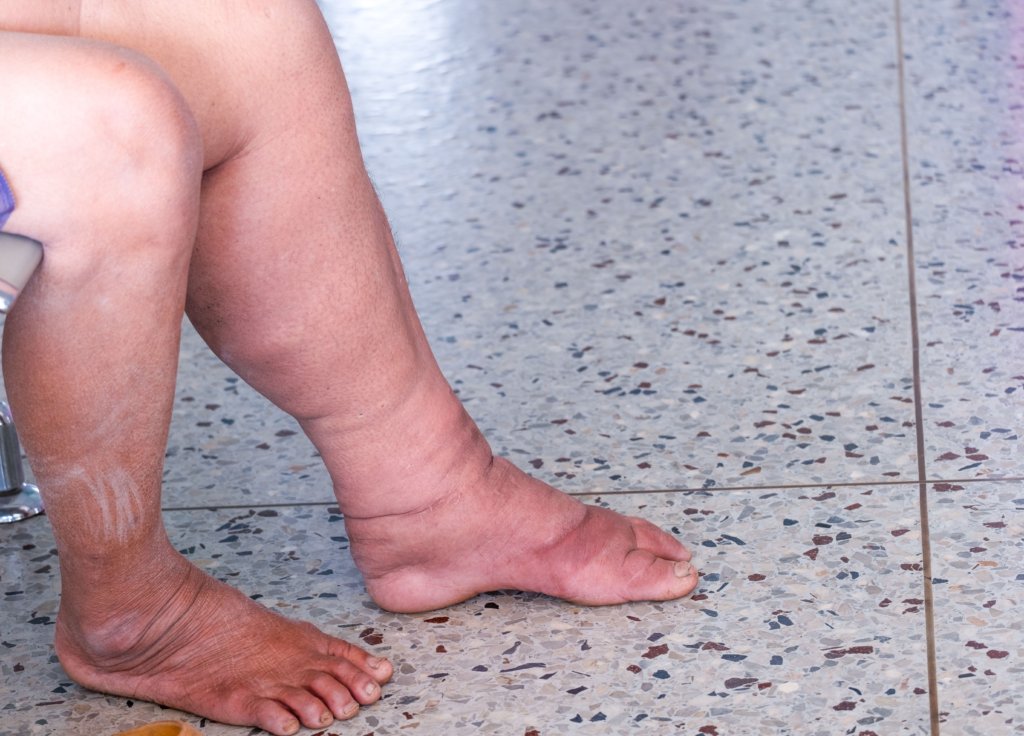

It is widely understood and accepted that Lymphedema can be an inherited medical condition and, as a result, is recognized under three distinct categories. Congenital Lymphedema refers to symptoms that develop in early childhood. Lymphedema Praecox refers to symptom development that occurs during adolescence, while Lymphedema Tarda refers to symptoms that show up in patients later in life. Lymphedema quite commonly develops in patients due to a traumatic injury damaging lymphatics. This type of trauma is generally linked to removing lymph nodes during surgical procedures related to cancer treatment or radiation. Infection is a second factor closely linked to the development of Lymphedema.
The treatment of lymphedema depends on the type and severity of the condition. Mild cases of lymphedema can often be managed with lifestyle changes such as maintaining a healthy weight, exercising regularly, and avoiding repetitive activities that can cause further damage to the lymphatic system.
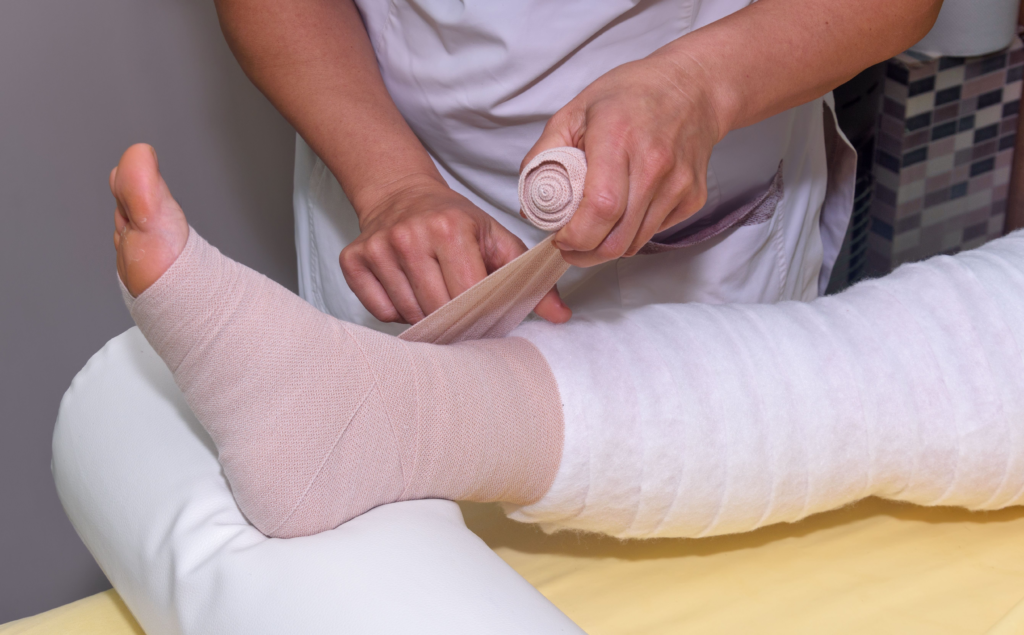

For more severe cases of lymphedema, treatments such as manual lymphatic drainage, compression garments, and physical therapy can be used to reduce swelling and improve the function of the lymphatic system. Surgery may sometimes be necessary to remove excess fluid and reduce swelling.
In addition to World Lymphedema Day, March is also Lymphedema Awareness Month. This is a necessary time to spread awareness about lymphedema and to support those living with the condition. There are several ways to get involved, from attending events and spreading the word on social media to donating to organizations that support lymphedema research.
The color for World Lymphedema Day is blue, and the lymphedema awareness ribbon is silver. Wearing these colors can be a great way to show your support for those living with lymphedema.
There are many ways to celebrate World Lymphedema Day. One of the best ways is to spread awareness and educate others about the condition. You can do this by talking to your friends and family about lymphedema, sharing posts on social media, attending events, and donating to organizations that support lymphedema research.
Another way to show your support is to wear blue and the lymphedema awareness ribbon on March 6th. This is a great way to raise awareness and show your support.
And finally, remember to reach out to those living with lymphedema. A simple message of support can go a long way in helping those living with this condition feel seen and heard.
Several great resources are available if you want to learn more about lymphedema. The National Lymphedema Network is a great place to start, as they provide information about the condition, resources for finding treatment, and support for those living with lymphedema.
The Lymphatic Education and Research Network is another excellent resource. They provide a wealth of information about lymphedema, from the latest research to support groups and resources for care and treatment.
World Lymphedema Day is an important day for honoring and celebrating those living with lymphedema. It is a day to raise awareness and support those living with the condition. There are many ways to get involved in celebrating World Lymphedema Day, from spreading awareness to reaching out to those living with the condition. We hope that you will join us in celebrating World Lymphedema Day! Contact Laser Lipo and Vein Center to schedule a consultation!
Back pain is a common problem that affects many people. But for those who suffer from lipedema, it can be much more than just an annoyance. Lipedema is a chronic condition that causes painful swelling in the legs and buttocks. Fortunately, there is a life-changing solution – lipedema surgery.
In this article, we will explore what lipedema is, its symptoms, causes, diagnosis, and treatment. We will also discuss the different types of lipedema surgery and the benefits of undergoing this procedure. Plus, we’ll look at the recovery process and the success stories of those who have gone through it themselves.
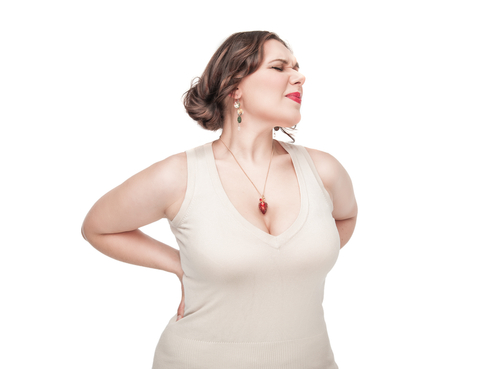

Lipedema is a condition that primarily affects women and is characterized by painful swelling of the legs and buttocks. It is known as a “painful fat disorder” because it causes fat to accumulate in the lower body, leading to discomfort and difficulty moving.
Lipedema can be difficult to diagnose because its symptoms are often similar to other conditions, such as obesity and lymphedema. Additionally, the cause of lipedema is still unknown, although it is believed to be a genetic disorder triggered by hormonal changes.
The most common symptom of lipedema is swelling of the legs and buttocks, and oftentimes the arms and abdomen. This swelling is usually symmetrical and occurs mainly in the lower parts of the body. It can also cause a feeling of tightness in the affected area, as well as aching, burning, and tenderness. The skin in the affected area may also appear dimpled, and the affected person may experience difficulty walking and standing for long periods.
In addition to physical symptoms, people with lipedema may also experience psychological symptoms such as low self-esteem and depression.
Lipedema can be difficult to diagnose because its symptoms are often similar to other conditions, such as obesity and lymphedema. To diagnose lipedema, your doctor will do a physical exam and ask about your medical history. They may also order tests, such as an ultrasound or MRI, to get a better look at the affected area.
Once lipedema is diagnosed, treatment may include lifestyle changes, such as diet and exercise, to reduce swelling and pain. Compression garments can also be used to help reduce swelling. In more severe cases, liposuction or liposculpture may be recommended to remove the excess fat.
A lot of women with lipedema have back pain because the “shelf” of weight accumulated on the lower back distorts the spine. The distortion from the fat lobule over the shelf will be sore if patients are on their feet or sitting for long periods. Many patients have chronic lower back pain without any relief because the constant existence of heavy lipedema tissue causes it.


Within a day or two after the tissue removal, patients report experiencing relief never experienced before. Unlike a pulled back muscle or a pinched nerve, surgery and the removal of this area’s fatty tissue and fluid is the only way to get relief.
Lipedema surgery is a life-changing solution for those suffering from lipedema of all types and stages, and especially with chronic secondary issues like back pain. This surgery involves the removal of excess fat from the affected area through liposuction or liposculpture. This surgery can help reduce the swelling, discomfort, and pain associated with lipedema. It can also improve mobility, reduce the risk of infection, and improve self-esteem.
There are many benefits to undergoing lipedema surgery. It can help reduce the swelling and pain associated with lipedema and improve mobility. It can also reduce the risk of orthopedic complications and improve self-esteem. Additionally, lipedema surgery can help reduce the risk of developing lymphedema, which can be a severe complication of lipedema. For patients with back pain, the surgery can provide almost immediate relief and allow them to have the ability for daily tasks once again once impossible – as simple as getting a good night’s rest, or the ability to perform accessible exercises more comfortably, like yoga and deep, restorative stretches.
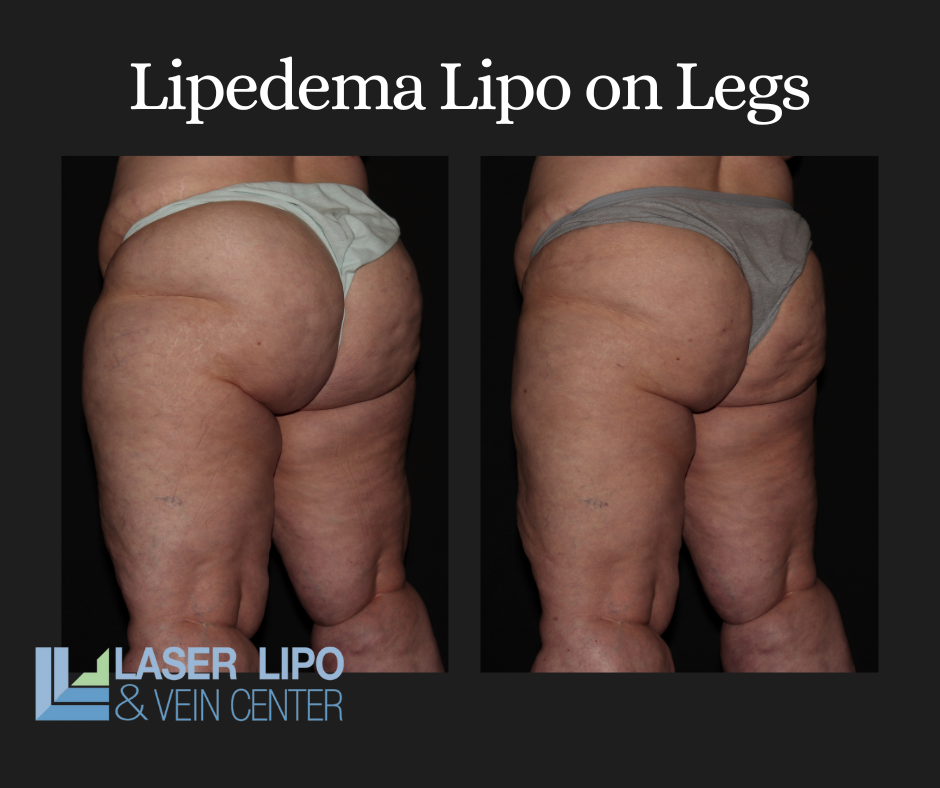

Lipedema surgery can be an effective treatment for those who have experienced significant weight loss. After weight loss, the skin in the affected area may be loose and saggy. Lipedema surgery can help to tighten and firm the skin and reduce the swelling and pain associated with lipedema.
Recovery from lipedema surgery can take several weeks. During this time, it is important to rest and avoid strenuous activities. Your doctor may also recommend compression garments to help reduce swelling and improve comfort.
Lipedema surgery is a life-changing solution for those suffering from lipedema. It can reduce the swelling and pain associated with lipedema and improve mobility. It can also reduce the risk of infection and improve self-esteem. If you are suffering from lipedema and are looking for a solution, contact Dr. Wright and Laser Lipo and Vein Center for help with lipedema and back pain.
Lipedema is one of the most misunderstood medical conditions in the practice of medicine. A lipedema diagnosis can take months if you do not have a knowledgeable physician to help you along the way. In fact, most information on the web points to the common misdiagnoses of lipedema instead of factual information. To help you better understand lipedema, here are some common myths surrounding the disease lipedema in 2019 that are simply not true:
Most patients have been told incorrectly that their lipedema is in fact just obesity. This misconception can be painfully frustrating and not encourage you down the right path. Some physicians simply do not have the knowledge or understanding of what lipedema entails. It does not help that research information and general knowledge continues to be scarce. There is quite a bit about lipedema that we do not know, such as its primary cause. However, lipedema is now much easier to differentiate from obesity, including correlations of hormonal changes in the body.
If you are misdiagnosed with obesity, you may be told that simple diet and exercise will help alleviate your symptoms. That cannot be further from the truth. No individual diagnosed with lipedema will be able to reduce their symptoms of lipedema this way alone. While diet and exercise will help maintain your weight, it requires more significant treatments. The most common form of lipedema treatment can involve wearing compression garments and manual lymphatic drainage massages. Surgical treatments such as liposuction are also available to reduce the fat tissue buildup, but this is more invasive, resulting in longer recovery times. There is no simple way to treat lipedema.
While most lipedema patients will experience a fat tissue buildup around their legs and thighs, these are not the only impacted areas. Lipedema can also impact your abdomen, upper arms, and even your chest. Most patients will notice the onset of lipedema start with the legs but move further up the body during later stages of the condition.
Seek help today by reviewing the comprehensive guide we have provided for lipedema at Lipedema.Net. This databank was created by Dr. Wright to help those in need, so you do not feel alone in the fight against lipedema. Dr. Wright leads several teams that provide a variety of treatment options that can make living with lipedema easier.